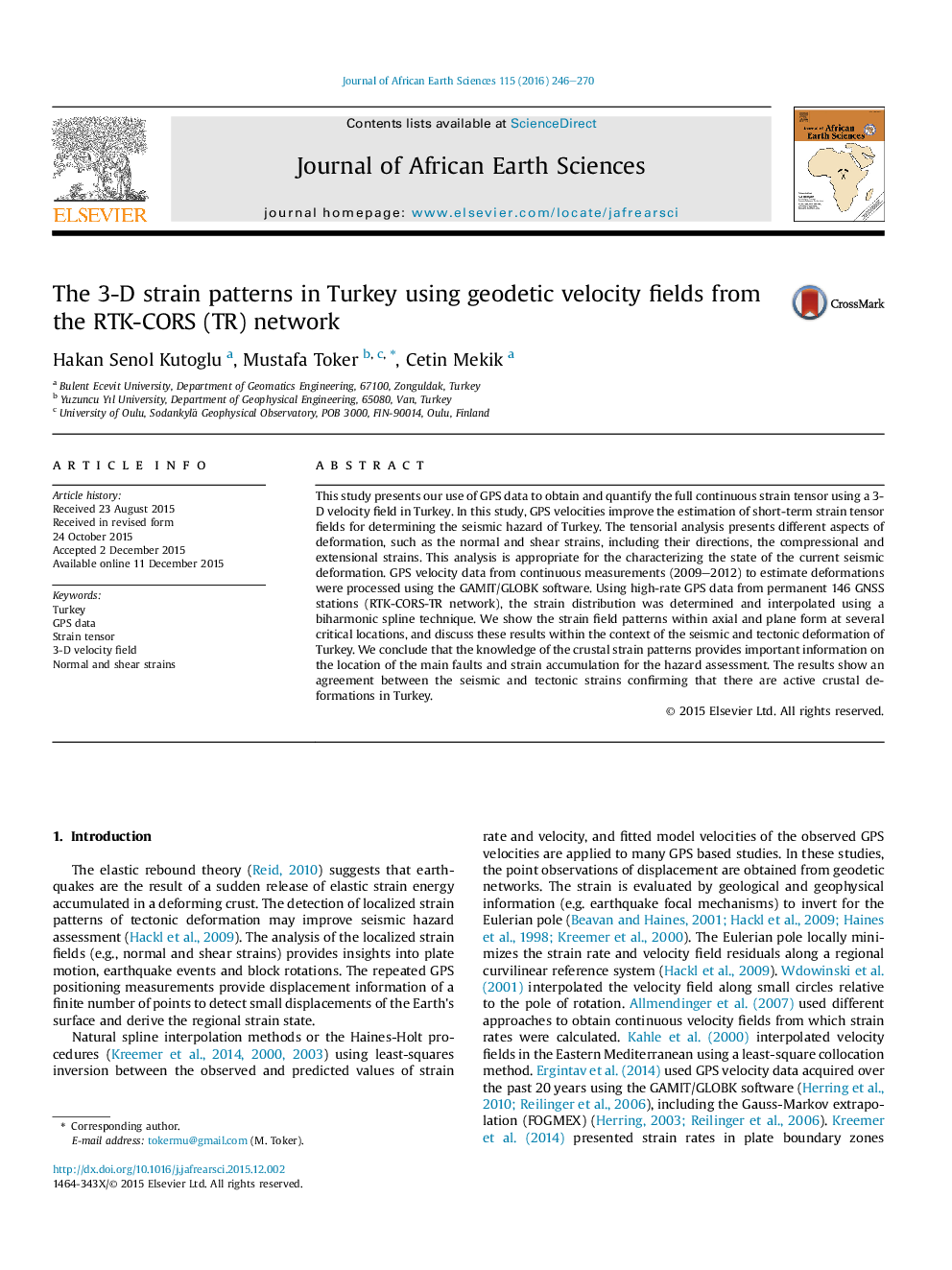| Article ID | Journal | Published Year | Pages | File Type |
|---|---|---|---|---|
| 4728413 | Journal of African Earth Sciences | 2016 | 25 Pages |
•Our study offers the potential to obtain crucial strain information.•Normal and shear strain fields with 3-D velocity field indicate active deformations.•Analysis of strain fields is significant for continuous strain modelling.•Normal-shear strains are important insights into the seismic events.
This study presents our use of GPS data to obtain and quantify the full continuous strain tensor using a 3-D velocity field in Turkey. In this study, GPS velocities improve the estimation of short-term strain tensor fields for determining the seismic hazard of Turkey. The tensorial analysis presents different aspects of deformation, such as the normal and shear strains, including their directions, the compressional and extensional strains. This analysis is appropriate for the characterizing the state of the current seismic deformation. GPS velocity data from continuous measurements (2009–2012) to estimate deformations were processed using the GAMIT/GLOBK software. Using high-rate GPS data from permanent 146 GNSS stations (RTK-CORS-TR network), the strain distribution was determined and interpolated using a biharmonic spline technique. We show the strain field patterns within axial and plane form at several critical locations, and discuss these results within the context of the seismic and tectonic deformation of Turkey. We conclude that the knowledge of the crustal strain patterns provides important information on the location of the main faults and strain accumulation for the hazard assessment. The results show an agreement between the seismic and tectonic strains confirming that there are active crustal deformations in Turkey.
